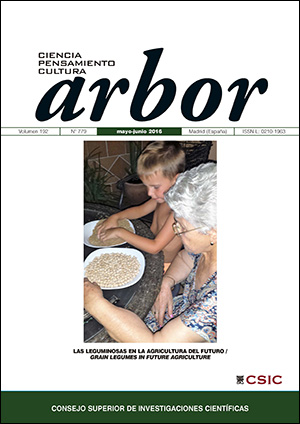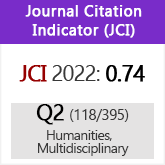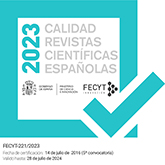Historia de la investigación en la simbiosis leguminosa-bacteria: una perspectiva didáctica
DOI:
https://doi.org/10.3989/arbor.2016.779n3009Palabras clave:
leguminosa, rizobio, simbiosis, fijación biológica de nitrógenoResumen
Después de los cereales, las leguminosas constituyen la segunda familia en importancia para la alimentación humana y animal. Sin embargo, en contraste con ellos, las leguminosas son capaces de crecer en suelos áridos, de escasa fertilidad, lo que se debe a su capacidad para establecer asociaciones simbióticas con bacterias del suelo llamadas rhizobia. Estos microorganismos forman unos órganos especiales en las raíces de las leguminosas, los nódulos, donde el dinitrógeno (N2) atmosférico se transforma en amonio que se exporta a la planta para su crecimiento. Desde su descubrimiento en los nódulos de las leguminosas hasta nuestros días, el conocimiento de las bacterias capaces de establecer simbiosis con estas plantas ha avanzado en múltiples aspectos. Sobre todo, los avances en las técnicas moleculares de identificación bacteriana y el acceso a lugares inexplorados ha permitido confirmar que la interacción de las leguminosas con los rhizobia es más antigua de lo que se creía y que las bacterias fijadoras de dinitrógeno (N2) son más abundantes y diversas de lo que se había pensado. Trataremos de describir la historia de una asociación cuyo desarrollo ha sido, y es, clave en la historia de la humanidad tal como la conocemos ahora.
Descargas
Citas
Agron, P. G., Ditta, G. S. y Helinski, D. R. (1992). Mutational analysis of the Rhizobium meliloti nifA promoter. Journal of Bacteriology, 174, pp. 4120-4129. PMid:1597427 PMCid:PMC206124
Balassa, R. (1954). Transformation mechanisms of Rhizobia. I-III. Acta microbiologica Academiae Scientiarum Hungaricae Magyar Tudományos Akadémia, 2, 1-2, pp. 51-78.
Balassa, G. (1963). Genetic transformation in Rhizobium: A review of the work of R. Balassa. Bacteriological Reviews, 27, pp. 228- 241. PMid:16350181 PMCid:PMC441180
Baldwin, I. L. y Fred, E. B. (1929). Nomenclature of the root-nodule bacteria of Leguminosae. Journal of Bacteriology, 17, pp. 141- 150. PMid:16559355 PMCid:PMC375049
Bedmar, E. J., González, J. J., Lluch, C. y Rodelas, B. (2006). Fijación de Nitrógeno: Fundamentos y Aplicaciones. Sociedad Espa-ola de Fijación de Nitrógeno.
Beijerinck, M. W. (1888). Cultur des Bacillus radicicola aus den Knöllchen. Botanishe Zeitung, 46, pp. 740–750.
Biswasa, J. C., Ladhaa, J. K. y Dazzob F. B. (2000). Rhizobia inoculation improves nutrient uptake and growth of lowland rice. Soil Science Society American Journal, 64, pp. 1644-1650. http:// dx.doi.org/10.2136/sssaj2000.6451644x http://dx.doi.org/10.2136/sssaj2000.6451644x
Brock, T. D. (1961). Milestones in Microbiology. Englewood Cliffs: Prentice-Hall. Disponible en: https://archive.org/details/MilestonesinMicrobiology.
Buchanan, R. E. (1915) Nomenclature of the Coccaceae. Journal of Infectious Diseases, 17, pp. 528-541. http://dx.doi.org/10.1093/infdis/17.3.528
Charles, T. C. y Finan, T. M. (1990). Genetic map of Rhizobium meliloti megaplasmid pRme SU47b. Journal of Bacteriology, 172, pp. 2469-2476. PMid:2158971 PMCid:PMC208885
Cohn, F. (1875). Untersuchungen ueber Bakterien. Beitraege zur Biologie der Planzen. En: Brock, T. D. (1961). Milestones in Microbiology. Englewood Cliffs: Prentice-Hall, pp. 127-222. Disponible en: https://archive.org/details/MilestonesinMicrobiology.
Collard, P. (1976). The Development of Microbiology. Cambridge, London: Cambridge University Press. PMCid:PMC1667259
Davis, J. C. (2007). La increíble historia de la humanidad: de la Edad de Piedra a nuestros tiempos. Barcelona: Planeta.
Downie, J. A., Knight, C. D., Johnston, A. W. B. y Rossen, L. (1985). Identification of genes and gene products involved in the nodulation of peas by Rhizobium leguminosarum. Molecular General Genetics, 198, pp. 255-262. http://dx.doi.org/10.1007/BF00383003
Egelhoff, T. T. y Long, S. R. (1985). Rhizobium meliloti nodulation genes: identification of nodDABC gene products, purification of NodA protein, and expression of nodA in Rhizobium meliloti. Journal of Bacteriology, 164, pp. 591-599. PMid:2997121 PMCid:PMC214293
FAO Statistical Pocketbook (2015). Disponible en: http://www.fao. org/3/a-i4691e.pdf.
Faucher, C., Maillet, F., Vasse, J., Rosenberg, C., van Brussel, A. A. N., Truchet, G. y Dénarié, J. (1988). Rhizobium meliloti host range nodH gene determines production of an alfalfa-specific extracellular signal. Journal of Bacteriology, 170, pp. 5489-5499. PMid:3056902 PMCid:PMC211642
Frank, B. (1889). Ueber die Pilzsymbiose der Leguminosen. Berichte der Deutschen Chemischen Gesellschaft, 7, pp. 332-346.
Freiberg, C., Fellay, R., Bairoch, A., Broughton, W. J., Rosenthal, A. y Perret, X. (1997). Molecular basis of symbiosis between Rhizobium and legumes. Nature, 387, pp. 394-401. http://dx.doi.org/10.1038/387394a0 PMid:9163424
Frioni, L. (1990). Ecología Microbiana del Suelo. Montevideo: Universidad de la República.
Glazebrook, J. y Walker, G. C. (1989). A novel exopolysaccharide can function in place of the calcofluor-binding exopolysaccharide in nodulation of alfalfa by Rhizobium meliloti. Cell, 56, pp. 661- 672. http://dx.doi.org/10.1016/0092-8674(89)90588-6
Giraud, E., Moulin, L., Vallenet, D., Barbe, V., Cytryn, E., Avarre, J. C., Jaubert, M., Simon, D., Cartieaux, F., Prin, Y., Bena, G., Hannibal, L., Fardoux, J., Kojadinovic, M., Vuillet, L., Lajus, A., Cruveiller, S., Rouy, Z., Mangenot, S., Sequrens, B., Dossat, C., Frank, W. L., Chang. W. S., Saunders, E., Bruce, D., Richardson, P., Normand, P., Dreyfus, B., Pignol, D., Stacey, G., Emerich, D., Vermeglio, A., Médique, C y Sadowsky, M. (2007). Legumes symbioses: absence of nod genes in photosynthetic bradyrhizobia. Science, 316, pp. 1307-1312. http://dx.doi.org/10.1126/science.1139548 PMid:17540897
García-Fraile, P., Carro, L., Robledo, M., Ramírez-Bahena, M. H., Flores-Félix, J. D., Fernández, M. T., Mateos, P. F., Rivas, R., Igual, J. M., Martínez-Molina, E., Peix, A. y Velázquez, E. (2012). Rhizobium promotes non-legumes growth and quality in several production steps: towards a biofertilization of edible raw vegetables healthy for humans. PLoS ONE 7, e38122. http://dx.doi.org/10.1371/journal.pone.0038122 PMid:22675441 PMCid:PMC3364997
Graham, P. H. (1992). Stress tolerance in Rhizobium and Bradyrhizobium, and nodulation under adverse soils conditions. Canadian Journal of Microbiology, 38, pp. 475-484. http://dx.doi.org/10.1139/m92-079
Hellriegel, H. y Wilfarth, H. (1888). Untersuchungen über die Stickstoffnahrung der Gramineon und Leguminosen. Berlin: Buchdruckerei der "Post" Kayssler. Disponible en: https://archive.org/ details/untersuchungen00hell.
Higashi, S. (1967). Transfer of clover infectivity of Rhizobium trifolii to Rhizobium phaseoli as mediated by an episomic factor. Journal of General and Applied Microbiology, 13, pp. 391-403. http://dx.doi.org/10.2323/jgam.13.391
Honeycutt, R. J., McClelland, M. y Sobral, B.W. (1993). Physical map of the genome of Rhizobium meliloti 1021. Journal of Bacteriology, 175, pp. 6945-6452. PMid:8226638 PMCid:PMC206821
Horvath, B., Bachem, C. W. B., Schell, J. y Kondorosi, A. (1987). Host specific regulation of nodulation genes in Rhizobium mediated by a plant-signal, interacting with the nodD product. EMBO Journal, 6, pp. 841-848. PMid:16453758 PMCid:PMC553473
Jabbouri, S., Reli?, B., Hanin, M., Kamalaprija, P., Burger, U., Promé, J. C. y Broughton, W. J. (1998). nolO and noeI (HsnIII) of Rhizobium sp. NGR234 are involved in 3-O-carbamoylation and 2-O-methylation of Nod factors. Journal of Biological Chemistry, 273, pp. 12047-12055.
Kowalski, M. (1967). Transducing phages of Rhizobium meliloti. Acta Microbiologica Polonica, 16, pp. 7-12. PMid:4166074
Krishnan, H. B. y Pueppke S. G. (1991). nolC, a Rhizobium fredii gene involved in cultivar-specific nodulation of soybean, shares homology with a heat-shock gene. Molecular Microbiology, 5, pp. 737-745. http://dx.doi.org/10.1111/j.1365-2958.1991.tb00744.x PMid:1646377
Kündig, C., Hennecke, H. y Göttfert, M. (1993). Correlated physical and genetic map of the Bradyrhizobium japonicum 110 genome. Journal of Bacteriology, 175, pp. 613-622. PMid:8423135 PMCid:PMC196196
Lerouge, P., Roche, P., Faucher, C., Maillet, F., Truchet, G., Promé, J. C. y Dénarié, J. (1990). Symbiotic host specificity of Rhizobium meliloti is determined by a sulphated and acylated glucosamine oligosaccharide signal. Nature, 344, pp. 781-784. http://dx.doi.org/10.1038/344781a0 PMid:2330031
Migula, W. (1897). System der Bakterien. Handbuch der Morphologie, entwicklungsgeschichte und systematik der bakterien (volume 1). Publisher Jena, Fischer. Disponible en: https://archive. org/details/systemderbakter02migugoog
Nobbe, F. y Hiltner, L. (1896). Bodenimpfung für anbau von leguminosen. Sächsische. Landwirtschaftliche Zeitschrift, 44, pp. 90-92.
Nuti, M. P., Ledeboer, A. M., Lepidi, A. A. y Schilperoort, R. A. (1977). Large plasmids in diferent Rhizobium species. Journal of General Microbiology, 100, pp. 241-248. http://dx.doi.org/10.1099/00221287-100-2-241
Orla-Jensen, S. (1909). Die Hauptlinien des Natürlichen Bacteriensystems nebst einer Uebersicht der Gärungsphenomene. Zentralblatt für Bacteriologie Parasitenkunds Infectionskrankheiten und Hygiene Ableitung, II Bd 22, pp. 305-346.
Rogel, M. A., Orme-o-Orrillo, E. y Martinez-Romero, E. (2011). Symbiovars in rhizobia reflect bacterial adaptation to legumes. Systematic and Applied Microbiology, 34, pp. 96-104. http://dx.doi.org/10.1016/j.syapm.2010.11.015 PMid:21306854
Peix, A., Ramírez-Bahena, M. H., Velázquez, E. y Bedmar, E. J. (2015). Bacterial asociations with legumes. CRC Critical Reviews in Plant Sciences, 34, pp. 17-42. http://dx.doi.org/10.1080/07352689.2014.897899
Peters, N. K., Frost, J. W. y Long, S. R. (1986). A plant flavone, luteolin, induces expression of Rhizobium meliloti nodulation genes. Science, 233, pp. 977-980. http://dx.doi.org/10.1126/science.3738520 PMid:3738520
Prazmowski, A. (1890). Die wurzelknöllchen der erbse. Landwirtschaflichen Versuchsstat, 37, pp. 161-238.
Prescott, L. M., Harley, J. P. y Klein, D. A. (2004). Microbiología. Madrid: McGraw-Hill Interamericana.
Price, N. P., Reli?, B., Talmont, F., Lewin, A., Promé, D., Pueppke, S. G., Maillet, F., Dénarié, J. Promé, J. C., Broughton, W. J. (1992). Broad-host-range Rhizobium species strain NGR234 secretes a family of carbamoylated, and fucosylated, nodulation signals that are O-acetylated or sulphated. Molecular Microbiology, 6, pp. 3575-3584. http://dx.doi.org/10.1111/j.1365-2958.1992.tb01793.x PMid:1474899
Ramírez-Bahena, M. H., García-Fraile, P., Peix, A., Valverde, A., Rivas, R., Igual, J. M., Mateos, P. F., Martínez-Molina, E. y Velázquez, E. (2008). Revision of the taxonomic status of the species Rhizobium leguminosarum (Frank 1879) Frank 1889, Rhizobium phaseoli Dangeard 1926AL and Rhizobium trifolii Dangeard 1926AL. R. trifolii is a later synonym of R. leguminosarum. Reclassification of the strain Rhizobium leguminosarum DSM 30132T (=NCIMB 11478T) into the new species Rhizobium pisi sp. nov. International Journal of Systematic and Evolutionary Microbiology, 58, pp. 2484-2490. http://dx.doi.org/10.1099/ijs.0.65621-0 PMid:18984681
Schindler, F. (1885). Über die biologische bedeutung der wurzelknöllchen bei den Papilionaceen. Journal die Landwirtschaft, 33, pp. 325-336.
Schlaman, H. R. M., Spaink, H. P., Okker, R. J. H. y Lugtenberg, B. J. J. (1989). Subcellular localization of the nodD gene product in Rhizobium leguminosarum. Journal of Bacteriology, 171, pp. 4686-4693. PMid:2670892 PMCid:PMC210268
Schlegel, H. G. (1990). Microbiología General. Barcelona: Ediciones Omega.
Schmidt, J., Wingender, R., John, M., Wieneke, U. y Schell, J. (1988). Rhizobium meliloti nodA and nodB genes are involved in generating compounds that stimulate mitosis of plant cells. Proceedings of the National Academy of Sciences of U. S. A., 85, pp. 8578-8582. http://dx.doi.org/10.1073/pnas.85.22.8578
Török, I. y Kondorosi, A. (1981). Nucleotide sequence of Rhizobium meliloti nitrogenase reductase (nifH) gene. Nucleic Acids Research, 9, pp. 5711-5723. http://dx.doi.org/10.1093/nar/9.21.5711 PMid:6273806 PMCid:PMC327555
Vinuesa, P., Silva, C., Lorite, M. J., Izaguirre-Mayoral, M. L., Bedmar, E. J. y Martínez-Romero, E. (2005). Molecular systematics of rhizobia based on maximum likelihood and Bayesian phylogenies inferred from rrs, atpD, recA and nifH sequences, and their use in the classification of Sesbania microsymbionts from Venezuelan wetlands. Systematic and Applied Microbiology, 28, pp. 702-716. http://dx.doi.org/10.1016/j.syapm.2005.05.007 PMid:16261860
Ward, H. M. (1887). On the tubercular swellings on the root of Vicia faba. Philosophical Transactions B, 178, pp. 539-562. http://dx.doi.org/10.1098/rstb.1887.0018
Woese, C. R. y Fox, G. E. (1977). Phylogenetic structure of the procaryotic domain: The primary kingdoms. Proceedings of the National Academy of Sciences of U. S. A., 74, pp. 5088-5090. http://dx.doi.org/10.1073/pnas.74.11.5088
Woese, C. R., Kandler, O. y Wheels M.L. (1990) Towards a natural system of organisms: proposal for the domains of Archaea, Bacteria, and Eucarya. Proceedings of the National Academy of Sciences of U. S. A., 87, pp. 4576-4579. http://dx.doi.org/10.1073/pnas.87.12.4576
Yanni, Y. G., Rizk, R.Y., Corich, V., Squartini, A., Ninke, K., Philip-Hollingsworth, S., Orgambide, G., de Bruijn, F., Stoltzfus, J., Buckley, D., Schmidt, T. M., Mateos, P. F., Ladha, J. K. y Dazzo, F. B. (1997). Natural endophytic association between Rhizobium leguminosarum bv. trifolii and rice roots and assessment of its potential to promote rice growth. Plant and Soil, 194, pp. 99-114 http://dx.doi.org/10.1023/A:1004269902246
Publicado
Cómo citar
Número
Sección
Licencia
Derechos de autor 2016 Consejo Superior de Investigaciones Científicas (CSIC)

Esta obra está bajo una licencia internacional Creative Commons Atribución 4.0.
© CSIC. Los originales publicados en las ediciones impresa y electrónica de esta Revista son propiedad del Consejo Superior de Investigaciones Científicas, siendo necesario citar la procedencia en cualquier reproducción parcial o total.Salvo indicación contraria, todos los contenidos de la edición electrónica se distribuyen bajo una licencia de uso y distribución “Creative Commons Reconocimiento 4.0 Internacional ” (CC BY 4.0). Puede consultar desde aquí la versión informativa y el texto legal de la licencia. Esta circunstancia ha de hacerse constar expresamente de esta forma cuando sea necesario.
No se autoriza el depósito en repositorios, páginas web personales o similares de cualquier otra versión distinta a la publicada por el editor.















